#magna graecia
Text
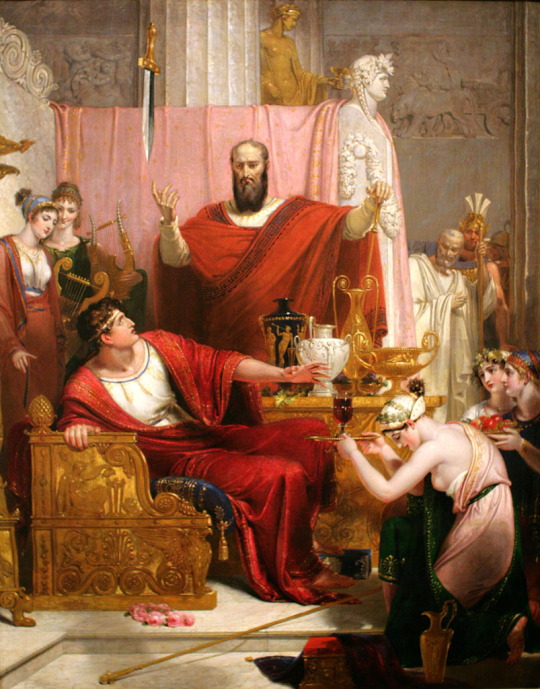
The Sword of Damocles by Richard Westall
#damocles#sword#art#richard westall#neoclassicism#neoclassical#dionysius i#dionysius#king#courtier#power#peril#fear#allusion#sicily#syracuse#magna graecia#ancient greece#ancient greek#cicero#maidens#swords#horsehair#court#dionysius i of syracuse#mediterranean#classical antiquity#timaeus of tauromenium#europe#european
103 notes
·
View notes
Text
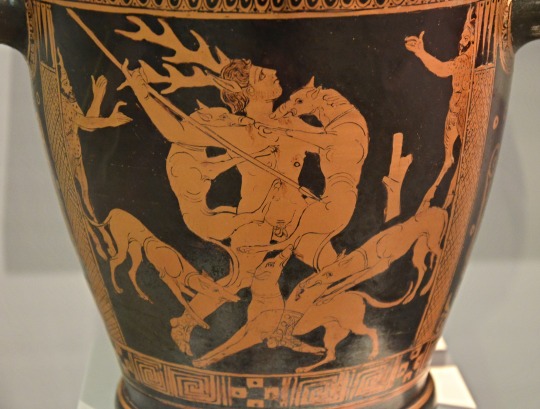
Actaeon, in the process of transforming into a deer, is set upon by his hounds. Apulian red-figure skyphos, artist unknown; ca. 400-350 BCE. Now in the Badisches Landesmuseum Karlsruhe, Germany. Photo credit: Carole Raddato.
#classics#tagamemnon#Ancient Greece#Classical Greece#Magna Graecia#classical mythology#Greek mythology#Actaeon#art#art history#ancient art#Greek art#Ancient Greek art#Classical Greek art#South Italian art#Apulia#Apulian art#vase painting#red-figure#skyphos#Badisches Landesmuseum Karlsruhe
820 notes
·
View notes
Text

APULIAN RED-FIGURE DECORATED AMPHORA
Ca. 4th century BC.
Magna Graecia
L:305mm / W:140mm ; 805g.
#APULIAN RED-FIGURE DECORATED AMPHORA#Ca. 4th century BC#Magna Graecia#pottery#ancient pottery#ancient artifacts#archeology#archeolgst#history#history news#ancient history#ancient culture#ancient civilizations#roman history#roman empire#roman art
254 notes
·
View notes
Text
Sirens of Greek Myth Were Bird-Women, Not Mermaids
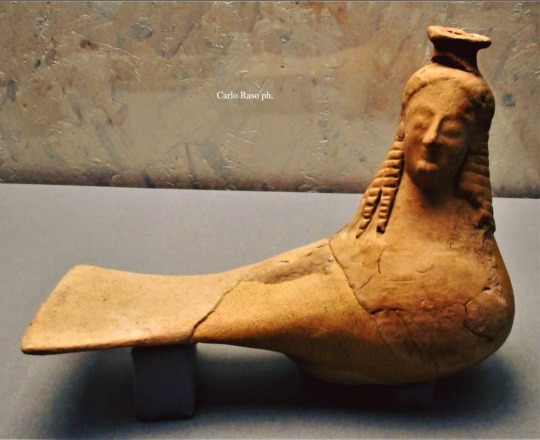
Bottle-askos in the shape of a siren (2nd half 6th century BC) from Locri / Southern Italy's Calabria. National Museum of Magna Graecia (Reggio Calabria, Italy).
In the wine-dark expanse of the Mediterranean Sea, far from the halls of civilization, there was once a small island—or so Homer, the famed poet of Ancient Greece, wrote in his epic The Odyssey. No buildings occupied its flowery meadows; no fisherman worked its shores. Those who passed in their black ships heard only voices, twining over the windless waves, singing a song that promised knowledge of all things. Once they heard it, they were enchanted; they had no choice but to land and seek out the singers. Those who did never left the island; their bodies remained, rotting amid the flowers, for none who heard the Sirens' song could escape it.
The story of the Sirens has inspired writers, poets, and artists for millennia. But somewhere along the way their form was confused. Today, Sirens are almost always represented as voluptuous mermaids, whose beauty and sexuality lure men to their deaths. But the Classical Greeks understood the Sirens differently: as bird-women, creatures that Mediterranean cultures traditionally associated with hidden knowledge.

Sirens first appear in the literary record with the Odyssey (written around 750 BCE) in a segment that’s much briefer than you’d think considering the cultural impact of these mystical, singing creatures. It goes like this: Odysseus, warned by the enchantress Circe of the danger posed by the Sirens’ song, orders his crew to stuff their ears with wax. But, curious to a fault, he has himself bound to the ship’s mast so he can listen without flinging himself into the sea. The Sirens promise him tales of all that had occurred during the war at Troy, and everywhere else besides; enchanted, he begs his crew to release him. He rants, raves, and threatens, but to no avail. His crew sails on until the song fades in the distance, and so saves his life.
Homer doesn’t describe the Sirens’ physical appearance in his epic poem, Wilson says. But in ceramic paintings and tomb sculptures from the time of writing, and centuries after, Sirens were usually depicted with taloned feet, feathered wings, and a beautiful human face. The bird-body of the Siren is significant to Wilson: In the eyes of traditional peoples all across Europe, birds were often graced with an otherworldliness associated with gods, spirits, and omens.

They inhabit the water, the air, and the earth. They’re also associated with song; they have voices that are not human voices, and kinds of movement that are not the same as human kinds of movement.
The Sirens’ role in tomb art is particularly telling. In ancient Mediterranean and Middle Eastern cultures—as far back as 7,000 years ago—birds were often depicted carrying spirits to the underworld. In Southern Italy's Calabria, archaeologists unearthed several Greek askos (unguentary vessel) in shape of sirens, most commonly found in tombs.
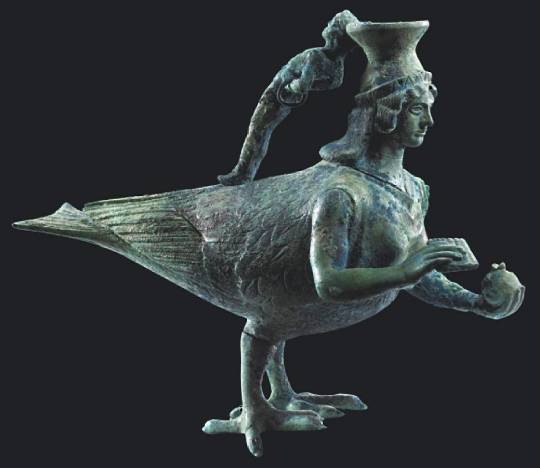
Bronze askos in the shape of a siren (5th century BC) from Crotone, Calabria, Italy - Archaeological Museum of Crotone.
Jump ahead a few millennia to 1,550 BCE, by which time Ba-birds, depictions of departing souls as human-faced birds, began appearing in Egypt. That connection between birds and dead souls seems to have then hopped over to Greece: Writing in the 5th century BCE, the playwright Euripides described the Sirens as at the beck and call of Persephone, one of the rulers of the underworld, while other writers identified the Sirens as rivals and dark echoes of the Muses, those goddesses of creativity.
These are the Sirens the Ancient Greeks would have recognized: bird creatures of the underworld, bridging the human world and what lies beyond. The Sirens—and their fateful songs—then offered a glimpse behind the veil, a chance to hear how earthly glories would echo in eternity. The question of what song the Sirens sing, what is this forbidden knowledge, what's wrong with it, what's the temptation—the text leaves a lot of open space there. Therein lies the seduction.
Yet today, mermaids or beautiful sea nymphs replace the dark, winged Sirens of ancient times.
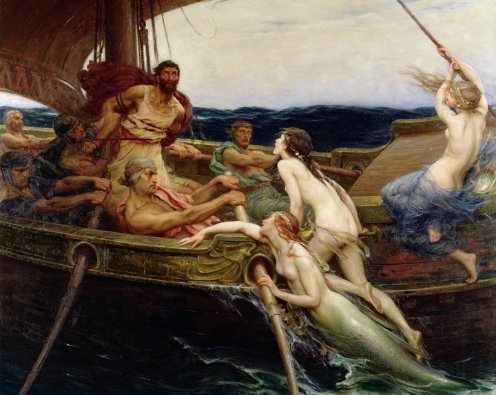
It is during the Middle Ages that the image of the siren began its shift from bird-woman to mermaid . With the transformation of the siren's image, the attributes associated with female monsters shifted. This suggests a change in the traits that were considered monstrous in women. The siren's movement from a frightening bird-woman to a beautiful mermaid represents female beauty becoming monstrous. Throughout the Middle Ages sirens increasingly represented a male fear of female seduction, suggesting a growing fear of female sexuality.
For medieval Christians, sirens were heavily associated with female sin.
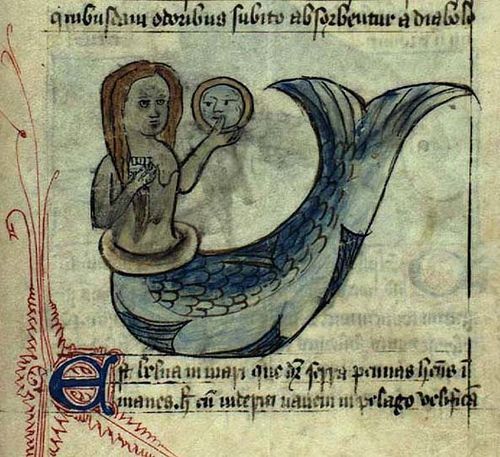
However it happened, the identification of Sirens with mermaids seems to have affected later translations of the Odyssey, and ultimately common knowledge of Sirens. Translators in the 19th and 20th centuries cast the Sirens in a sexualized light. In one prose translation, the Sirens speak of “the sweet voice from our lips,” despite the word στομάτων directly translating to the less sensual “mouths.” Another adds flowery descriptors of “each purling note/like honey twining/from our lips.” But unlike the Odyssey’s other island temptresses, Circe and Calypso, the Sirens get no admiring description of their faces or hair. Only their voice is described, and their field of bones and flowers.

That’s a pretty strong indicator that the Sirens are not meant to be read as offering a sexual temptation. You can kiss lips; mouths devour.
Folklore and mythology move on, given enough time. Today, the Siren is just another word for mermaid, and is likely to remain so. But there’s something richly thematic about the Sirens of Classical Greece that deserves to be remembered: in-between creatures on a lonely island, floating between the boundaries of life and death, and offering an irresistible song of both. Water-temptresses are a dime a dozen; the Sirens offer wisdom.
Follow us on Instagram, @calabria_mediterranea

#sirens#calabria#homer#italy#italia#south italy#southern italy#mediterranean#mediterranean sea#the odyssey#ancient greece#greek#greek art#art#terracotta#greek mythology#greek myth#underworld#mermaids#mythological creature#magna graecia#magna grecia#locri#folklore#mythology#siren#mermaid#crotone
87 notes
·
View notes
Text

Gnathian vase
350-300 BCE
Medelhavsmuseet, Stockholm
Stockholm, November 2023
66 notes
·
View notes
Photo
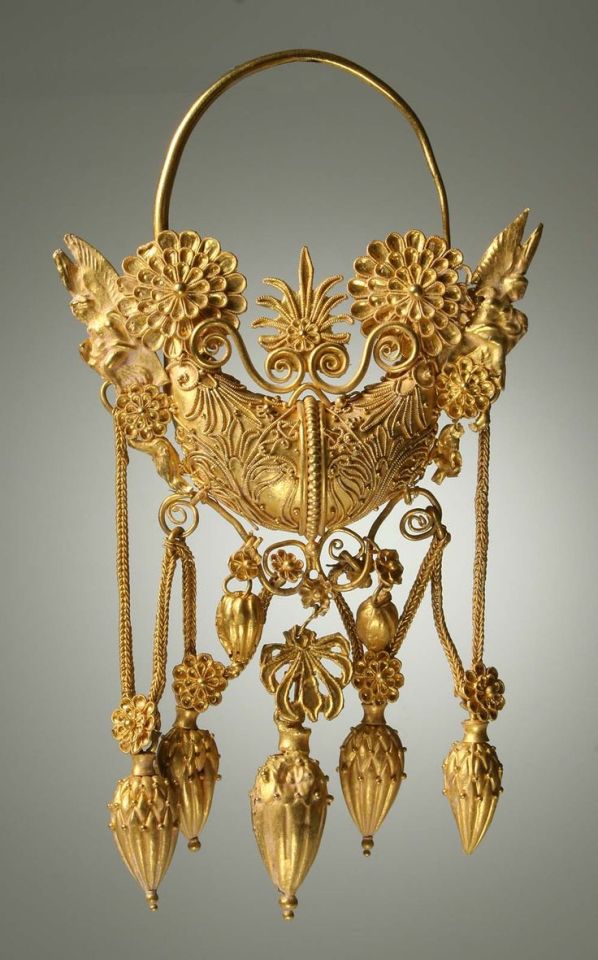
Ancient Greek gold earring, dated to between the 4th and 2nd centuries BCE. found in taranto, Italy
316 notes
·
View notes
Text
Archaeologists have made a breathtaking discovery in the ancient city of Paestum, situated in ancient Magna Graecia on Italy's southern coast.
Nestled near the city walls, just a stone's throw away from the sea, two "exceptional" Doric-style temples have been uncovered, dating back to the early 5th century BC. These temples stand as a testament to the architectural prowess and spiritual life of the ancient Greeks.
Paestum, originally founded as Poseidonia around 600 BC, flourished under various rulers before falling under Roman control. The discovery of these temple remains offers invaluable insights into the religious practices that spanned across the Greek, Lucanian, and Roman periods.
27 notes
·
View notes
Photo

..
#architecture#ancient world#archaeology#classical art#history#paestum#original photography#magna grecia#original photographers#magna graecia#traveling#reisen#antiquity#antike#travel#kampanien#italy#italia#travelling#reise#classical architecture#architektur#archaeological site#campania#columns#säulen#temple#tempel#ancient#antik
57 notes
·
View notes
Text
A classic Greek vs Roman situation
#agathocles#greeks vs romans#roman history#greek history#syracuse#sicily#archimedes#greek tyrants#greek tumblr#roman tumblr#italian tumblr#sicilian#king of Sicily#sextus can sext us#sextus pompey#Sextus Pompeius#pompey the great#punic wars#carthage#greece#magna graecia#greater greece#pyrrhus#pyrrhus of epirus#pyrrhic victory#pyrrhic#Pompeius magnus#gnaeus pompey#pompeius#gnaeus pompeius magnus
7 notes
·
View notes
Text

View of Paestum(Greek ancient city Poseidonia) on the coast of the Tyrrhenian Sea in Magna Graecia.Italy.
The ruins of Paestum are famous for their three ancient Greek temples in the Doric order, dating from about 550 to 450 BC, which are in an excellent state of preservation. The city walls and amphitheatre are largely intact, and the bottom of the walls of many other structures remain, as well as paved roads. The site is open to the public, and there is a modern national museum within it, which also contains the finds from the associated Greek site of Foce del Sele.
Solinus wrote that it was established by Dorians.After its foundation by Greek colonists under the name of Poseidonia (Ancient Greek: Ποσειδωνία), it was eventually conquered by the local Lucanians and later the Romans. The Lucanians renamed it to Paistos and the Romans gave the city its current name.As Pesto or Paestum, the town became a bishopric (now only titular), but it was abandoned in the Early Middle Ages, and left undisturbed and largely forgotten until the eighteenth century.
Today the remains of the city are found in the modern frazione of Paestum, which is part of the comune of Capaccio Paestum in the Province of Salerno in the region of Campania, Italy. The modern settlement, directly to the south of the archaeological site, is a popular seaside resort with long sandy beaches. The Paestum railway station on the Naples-Salerno-Reggio Calabria railway line is directly to the east of the ancient city walls.
More on Wikipedia:https://en.wikipedia.org/wiki/Paestum
#Paestum#Poseidonia#Dorians Greeks#Greek colonization#ancient world#Italy#Campania#history#Magna Graecia
17 notes
·
View notes
Text
The Lokrian goddess: an interpretation of the abduction of Persephone in Magna Graecia
The myth of Persephone is well known to a lot of polytheists through the Homeric Hymn to Demeter, but in 1889 archaeologists unearthed some pinakes (votive tablets) from the shrine to Persephone (the famous Persephoneion) in the greek colony of Epizephyrian Locri (modern day Calabria, Italy), that contain a different version of the myth.
In these plaques, her mother Demeter is absent and Persephone is depicted as "willing bride and powerful underworld queen". Persephone does not return.
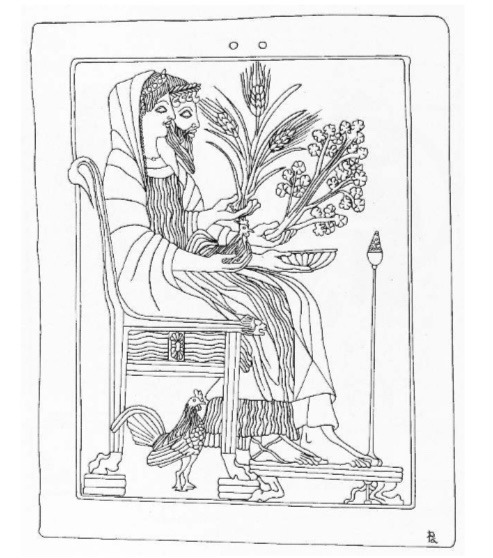
This is because local women turned to Persephone for assistance in biological and social transitions. The pinakes draw the goddess into a set of experiences that map a mortal woman's life: for example, one of the most popular motifs is the abduction of a maiden by a man on his chariot. The maiden's emotional reactions to her own abduction range from terror to active affection: these depictions represent the complex reactions that the worshippers brought to the cult.
#hellenic polytheism#helpol#hellenic reconstructionism#hellenic pantheon#theoi#persephone#persephone deity#hades and persephone#hades and kore#greek mythology#magna graecia#mine#ancient greece#hellenism
43 notes
·
View notes
Text

View of part of the ruins of the Temple of Juno Lacinia in Agrigento
by Louis-François Cassas
#louis françois cassas#art#ruins#architecture#landscape#temple#temples#temple of juno lacinia#agrigento#sicily#mediterranean#magna graecia#europe#european#classical antiquity#ancient greek#ancient greece
73 notes
·
View notes
Text
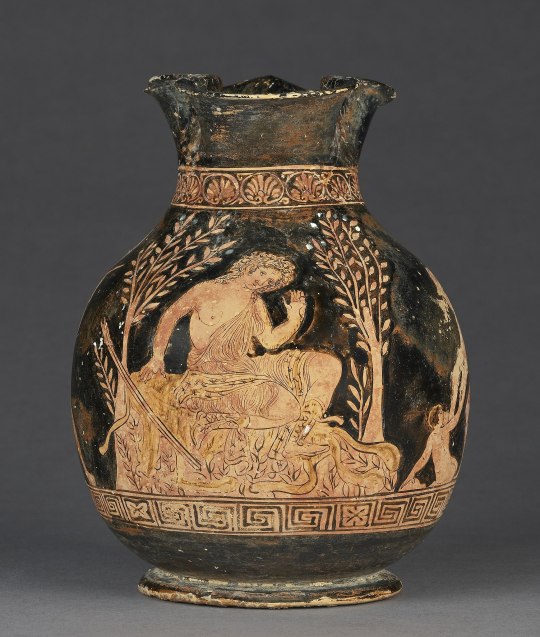
The nymph Kallisto, companion of Artemis, begins her enforced transformation into a bear. Apulian red-figure chous, attributed to a painter adjacent to the Black Fury Group; ca. 360 BCE. Now in the Getty Villa, Malibu.
#classics#tagamemnon#Ancient Greece#Classical Greece#Magna Graecia#Apulia#classical mythology#Greek mythology#Callisto#Kallisto#art#art history#ancient art#Greek art#Ancient Greek art#Classical Greek art#South Italian art#Apulian art#vase painting#red-figure#chous#Black Fury Group#Getty Villa
1K notes
·
View notes
Text
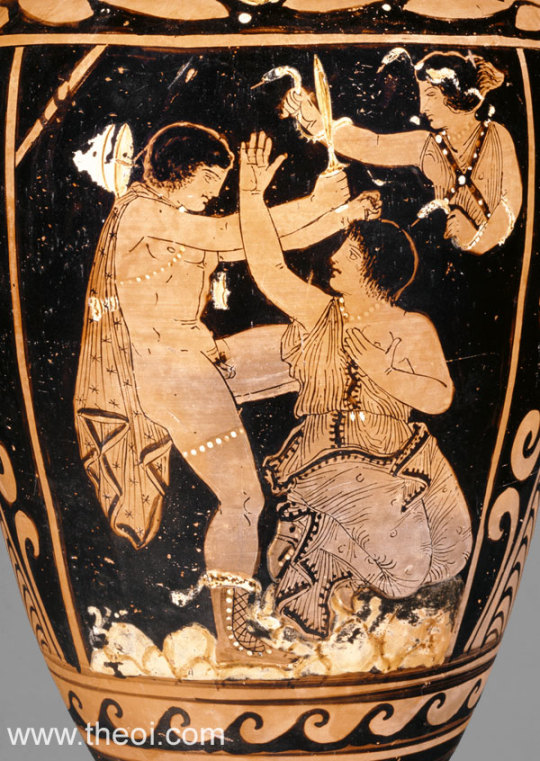
Orestes murdering Klytaimnestra, with one of the Erinyes arriving to avenge her. Red-figure amphora, Paestum (Magna Graecia), c. 350-320 BCE.
#ancient art#magna graecia#erinyes#orestes#klytaemnestra#ancient italy#amphora#paestum#hellenic deities#violence tw#serpents
1 note
·
View note
Text
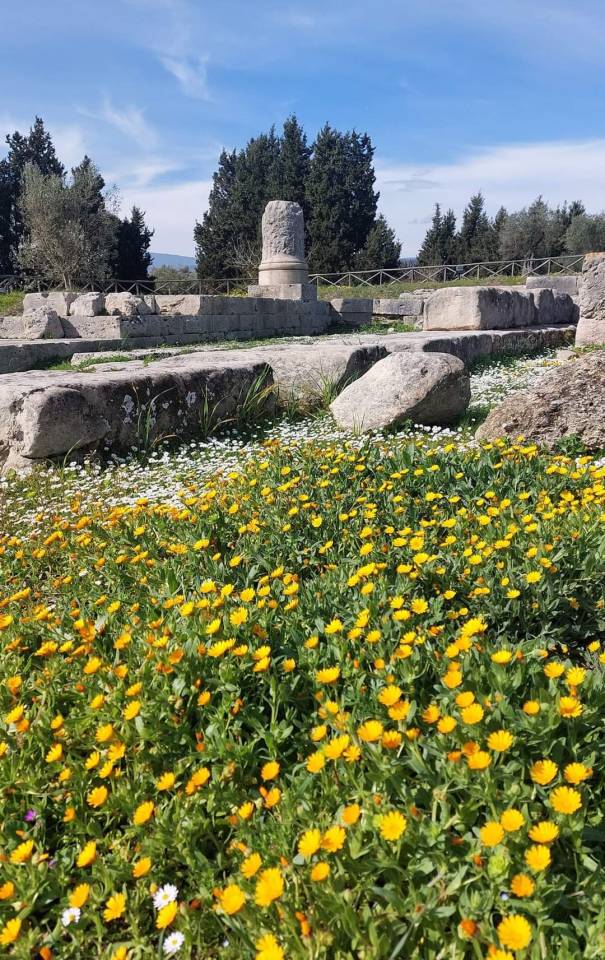

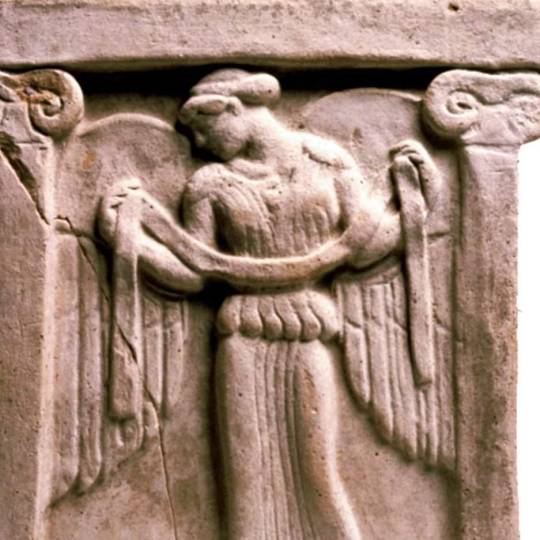
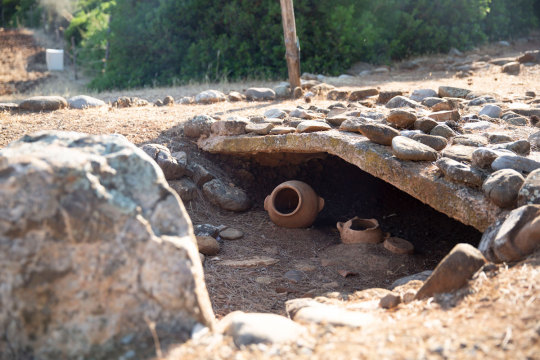

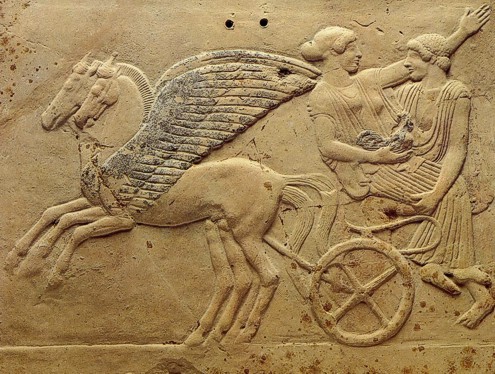




Locri, Calabria, Italy
Locri Epizefiri (Greek Λοκροί Ἐπιζεφύριοι; from the plural of Λοκρός, Lokros, "a Locrian" and ἐπί epi, "on", Ζέφυρος (Zephyros), West Wind, thus "The Western Locrians") was founded about 680 BC on the Italian shore of the Ionian Sea, near modern Capo Zefirio, in Southern Italy's Calabria, by the Locrians, apparently by Opuntii (East Locrians) from the city of Opus, but including Ozolae (West Locrians) and Lacedaemonians.
Due to fierce winds at an original settlement, the settlers moved to the present site. After a century, a defensive wall was built. Outside the city there are several necropoleis, some of which are very large.
Locris was the site of two great sanctuaries, that of Persephone and of Aphrodite. Perhaps uniquely, Persephone was worshiped as protector of marriage and childbirth, a role usually assumed by Hera, and Diodorus Siculus knew the temple there as the most illustrious in Italy.
In the early centuries Locris was allied with Sparta, and later with Syracuse. It founded two colonies of its own, Hipponion and Medma.
During the 5th century BC, votive pinakes in terracotta were often dedicated as offerings to the goddess, made in series and painted with bright colors, animated by scenes connected to the myth of Persephone. Many of these pinakes are now on display in the National Museum of Magna Græcia in Reggio Calabria. Locrian pinakes represent one of the most significant categories of objects from Magna Graecia, both as documents of religious practice and as works of art. In the iconography of votive plaques at Locri, her abduction and marriage to Hades served as an emblem of the marital state, children at Locri were dedicated to Persephone, and maidens about to be wed brought their peplos to be blessed.
During the Pyrrhic Wars (280-275 BC) fought between Pyrrhus of Epirus and Rome, Locris accepted a Roman garrison and fought against the Epirote king. However, the city changed sides numerous times during the war. Bronze tablets from the treasury of its Olympeum, a temple to Zeus, record payments to a 'king', generally thought to be Pyrrhus. Despite this, Pyrrhus plundered the temple of Persephone at Locris before his return to Epirus, an event which would live on in the memory of the Greeks of Italy. At the end of the war, perhaps to allay fears about its loyalty, Locris minted coins depicting a seated Rome being crowned by 'Pistis', a goddess personifying good faith and loyalty, and returned to the Roman fold.
The city was abandoned in the 5th century AD. The town was finally destroyed by the Saracens in 915. The survivors fled inland about 10 kilometres (6 mi) to the town Gerace on the slopes of the Aspromonte.
Today, the modern town of Locri boasts a National Museum and an Archaeological Park, etirely dedicated to the ancient Greek city. The museum preserves the most important findings of the time, such as vases, pinakes, tools used in everyday life, architectural remains from the various excavation area.
Follow us on Instagram, @calabria_mediterranea
#locri#calabria#italy#italia#south italy#southern italy#mediterranean#mediterranean sea#magna graecia#magna grecia#archaeology#archeology#ancient#art#ancient art#history#ancient history#greek#greek art#ancient greece#landscape#italian#italian landscape#landscapes#europe#persephone#olive trees#olive tree#nature#nature photography
72 notes
·
View notes
Text



Greek Banquet Scene
* Southern Italy (Lucania ?)
* British Museum
London, July 2022
#Greek#vase#ancient#art#banquet#music#clothing#furniture#Greek women#Magna Graecia#British Museum#my photo
134 notes
·
View notes